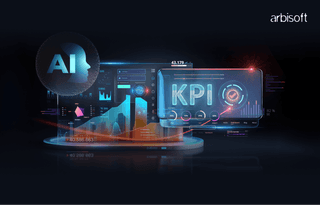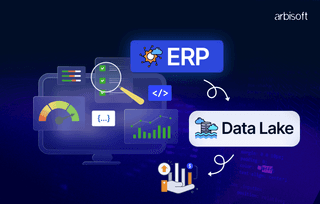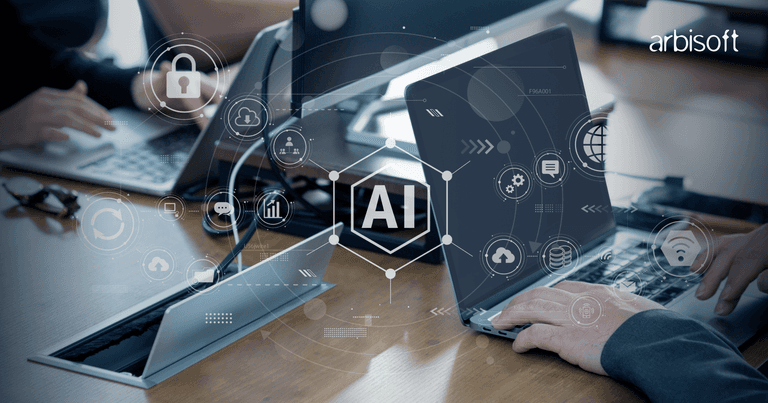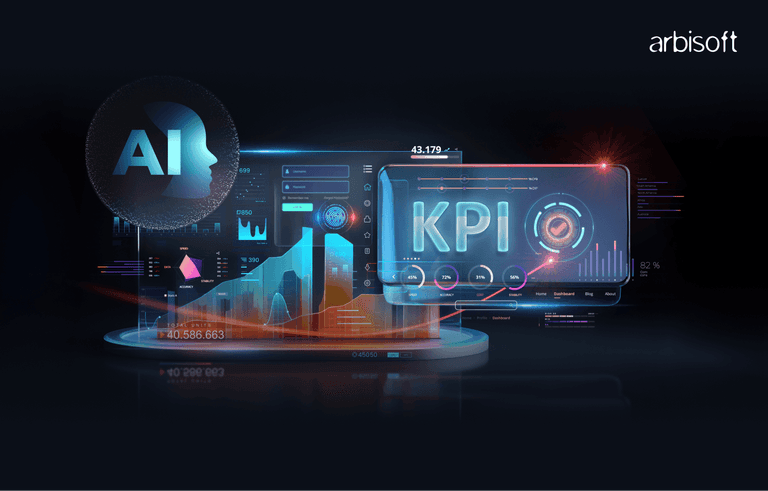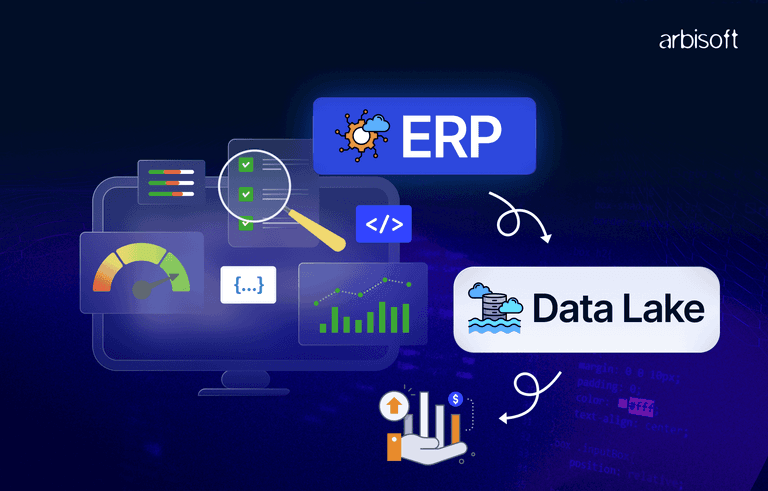We put excellence, value and quality above all - and it shows




A Technology Partnership That Goes Beyond Code

“Arbisoft has been my most trusted technology partner for now over 15 years. Arbisoft has very unique methods of recruiting and training, and the results demonstrate that. They have great teams, great positive attitudes and great communication.”
Can Predictive Analytics Solutions Really Transform Your Business Strategy?

Let’s just get this out of the way. Predictive analytics is one of those phrases you’ve probably heard tossed around in boardrooms, tech blogs, or those “future of business” webinars your boss swears you can’t miss. But is it smoke and mirrors or the real deal? I’ve dug into the facts, real stories, and hair-pulling moments from businesses that got their hands dirty. And folks, there’s more substance than sizzle.
Why Businesses Are Turning to Predictive Analytics
Business doesn’t let you rest. Markets shift fast. Competitors sprint ahead. I’ve seen it too many times.
This is where predictive analytics steps in, not as a magic trick, but as a seatbelt for the roller coaster.
What Is Predictive Analytics and Why Is It Important?
Let’s start with a clear picture. Predictive analytics is the practice of using historical data, predictive modeling techniques, machine learning, and big data predictive analytics to forecast what’s likely to happen next.
Think of it like driving through thick fog. Traditional analytics tells you where you’ve already hit potholes. Predictive analytics points out where the next one is likely to appear, giving you time to steer around it.
The global predictive analytics market is estimated at about USD 22.22 billion in 2025 and projected to grow to nearly USD 91.92 billion by 2032, with a CAGR near 22.5%.
Many executives still ask why is predictive analytics important. The answer is simple: it turns raw data into foresight, helping businesses anticipate change instead of reacting to it.
Top Industry Trends Driving Analytics Adoption
We have defined the concept, now let’s examine what’s pushing adoption forward.
Automated machine learning, edge computing, and privacy‑aware tech are the engine, wheels, and seat covers.
These trends make predictive analytics solutions more accessible. It’s no longer just for data scientists—it’s in the hands of sales, HR, and operations too.
Edge computing makes a big difference. Instead of sending everything to the cloud, you run models on local gear. That cuts lag. Keeps insights fresh on the fly.
Competitive Pressures and Customer Expectations
Now that we’ve seen the tech trends, let’s talk end users.
Everyone wants faster, more accurate decisions. Competitors aren’t waiting. Customers expect you to know what they want before they do.
In my experience, that expectation creeps into every strategy meeting. Real‑time insights and personalized engagement? That’s what predictive analytics in business offers.
Pain Points: The Strategic Challenges of Legacy and Compliance
We’ve seen why predictive analytics is gaining momentum and the market forces pushing it forward. But adopting it isn’t all smooth sailing. There are roadblocks—some technical, some regulatory—that can stall even the best-planned projects.
Integrating Predictive Analytics with Legacy Systems
Data often lies scattered like socks after laundry day. Mash predictive analytics onto older tech and you get compatibility headaches, messy datasets, and database tantrums.
Navigating Regulatory Compliance and Data Privacy
2025 is serious about privacy. Over 75% of the world is covered by modern data rules. AI needs transparency, consent tracking, and data governance.
Compliance officers are now your biggest allies and your greatest source of concern.
Avoiding Common Mistakes in Predictive Analytics Adoption
Things go wrong. I’ve seen teams underestimate integration, skip change management, or sprinkle predictive pixie dust on poor quality data.
Predictive analytics is only as good as your inputs and your people. Treat it as a transformation, not a short‑term project.
Agitating the Stakes: Missed Opportunities Without Predictive Analytics
We’ve seen the risks of adoption. Now let’s talk the risks of doing nothing.
How Data-Driven Decisions Impact Growth and Optimization
Companies using predictive analytics are often reporting double‑digit revenue growth and cost reductions. Surveys show 54% of mature analytics firms saw revenue increases, and 44% gained a competitive edge.
In finance, firms saw ROI of 250–500% in year one and cost cuts around 25% in operations. Predictive analytics in finance also boosted customer retention by 30% through more accurate credit scoring and fraud detection.
The Cost of Falling Behind: Competitors and Market Share
Clinging to old‑school analytics costs you. Businesses embracing predictive analytics are nearly three times more likely to report major revenue growth than the laggards.
Real-World Consequences
Walmart optimized inventory, balanced overstock and stockouts. AmEx modeled credit risk to cut defaults. Hospitals like Johns Hopkins reduced readmissions by spotting early warning signs. These are concrete uses of predictive analytics in healthcare, finance, and manufacturing.
Solution-Focused Transformation: Unlocking Predictive Success
We’ve seen why it matters. Now here’s how to make it stick.
Essential Steps for Predictive Analytics Implementatio
Define business goals first. Clean your data. Garbage in, garbage out. Train your team so they actually adopt the tools.
Choose an AI vendor for predictive analytics that fits your infrastructure and long-term strategy. Pilot small. Measure results. Scale what works. That’s the essence of the essential steps for predictive analytics implementation.
How Can Predictive Analytics Improve Performance Measurement and Decision-Making
With predictive analytics humming, dashboards shift from hindsight to foresight.
If forecasts suggest sales will dip, you can course‑correct before it hurts. That’s how predictive analytics can improve decision‑making and performance measurement.
Choosing the Right Predictive Modeling Techniques and Algorithms
You don’t need a stats PhD. AutoML tools let you test predictive analytics algorithms—from random forests to neural networks—without drowning in code.
The key isn’t complexity—it’s picking models that match your problem, people, and data. Don’t bring a bazooka if a slingshot will do.
Big Data and Scalability in Predictive Analytics
Predictive analytics thrives on big data—the flood from ERP logs, IoT feeds, customer apps. Scalable cloud and edge architectures let you handle this volume and velocity.
Ensuring Technical Compatibility and Seamless Integration
Ask the hard questions: APIs, lifecycle, integration with your ERP and CRM. Compatibility matters. A model that can’t integrate is just a toy.
Tangible Business Results: Transforming Strategy to Action
Here’s where the theory turns into a measurable impact.
Benefits of Predictive Analytics for Revenue Growth and Customer Retention
Predictive analytics solutions often drive cross‑sell wins, smarter pricing, and personalization at scale. That improves retention and unlocks new revenue.
How Predictive Analytics Can Reduce Costs Across Departments
Cost efficiency is one of the biggest benefits of predictive analytics. Operations teams prevent expensive breakdowns with predictive maintenance. Finance departments reduce losses by catching fraud early. HR retains valuable employees by spotting turnover risks before they resign. No matter the department, anticipating issues before they surface helps control expenses and protect profitability.
Predictive Analytics in Healthcare, Finance, and Manufacturing
In healthcare, predictive analytics goes beyond saving costs; it improves patient outcomes by predicting treatment needs, optimizing staffing, and reducing readmissions. In finance, it sharpens credit risk assessments, supports smarter investment strategies, and keeps fraud at bay in real time.
Predictive analytics in manufacturing enables accurate demand forecasting, real-time quality control, and proactive equipment maintenance, helping factories cut downtime and keep supply chains running smoothly.
These industry-specific capabilities show the wider scope of predictive analytics in business strategy.
Measuring Proven ROI: Metrics That Matter
Track predictive accuracy, time‑to‑insight, cost saved, and churn dropped. IT automation now makes it easier to report ROI with meaningful KPIs tied to outcomes.
That’s how using predictive analytics can be a great way for businesses to prove value without the fluff.
The Future Scope: Evolving Roles and Expanding Potential
We’ve talked about what predictive analytics is delivering for businesses today. Now let’s shift focus to where it’s headed and how its role will keep evolving.
What Is the Role of Predictive Analytics in Business Strategy?
Predictive analytics has moved from being an optional tool to a core driver of business strategy. It’s woven into planning, decision-making, and performance measurement. Leaders aren’t debating whether or not to use it. They’re focused on how to apply it to move faster, work smarter, and deliver more value than the competition.
The Expanding Scope of Predictive Analytics in Business
What is the scope of predictive analytics? It now spans marketing, finance, healthcare, HR, manufacturing, logistics, and customer service. As adoption grows, the technology is moving from specialized use cases to enterprise-wide transformation.
Preparing for the Next Wave of Predictive Solutions
Want to transform? Invest in data governance, agile infrastructure, and people now. That’s how data analytics can transform your business long term.
The firms that will lead in 2026 are those laying the groundwork today with predictive analytics solutions.









